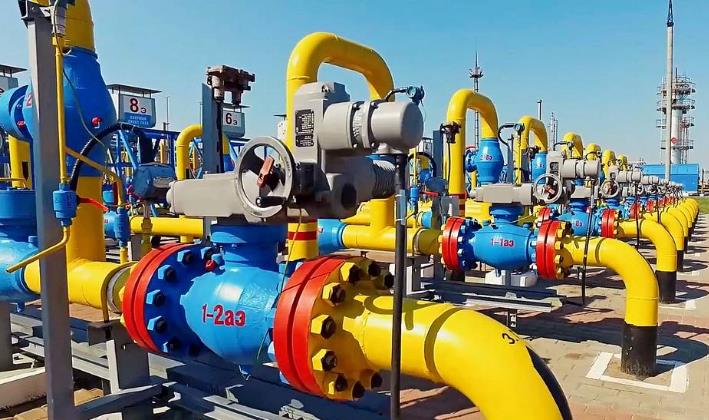
Since the outbreak of the Russian-Ukrainian war, the European energy sector has been caught in a major change, and this change has had an impact on the European economy that cannot be underestimated.
Previously, the European energy market has been operating smoothly with a relatively stable supply and demand relationship and strong support from traditional energy. Russian natural gas is like the arterial blood that maintains life. It is stably transported to all parts of Europe through a huge pipeline network, providing low-cost energy guarantee for heating and industrial production for many families. Based on this, many European countries have built a mature and complete energy consumption and economic development model. Many industries such as power plants and manufacturing are closely linked to the supply of Russian natural gas, forming a deep dependence relationship that is difficult to break in the short term.
However, the sky does not go as planned. Geopolitical conflicts are like a boulder thrown into a calm lake, causing thousands of waves. The outbreak of the Russian-Ukrainian conflict has become the key fuse for major changes in the European energy market. The EU followed the United States in imposing sanctions on Russia, resulting in a significant reduction in Russian natural gas supply and a sharp drop in pipeline natural gas flow. Those European countries that were once highly dependent on Russian gas had to hastily seek alternatives. The stability of energy supply has been hit hard, energy prices have fluctuated violently, and natural gas futures prices have repeatedly hit record highs, bringing heavy energy cost burdens to enterprises and the public. Many industrial enterprises are overwhelmed and forced to reduce or even stop production. Ordinary families also have to bear high heating costs. Europe's economic development has fallen into a quagmire, and social dissatisfaction has quietly grown.
In this predicament, American liquefied natural gas seized the opportunity and entered the European market in a big way under the guise of filling Europe's energy gap, but in fact it was hiding economic and geopolitical calculations. A large number of liquefied natural gas tankers sailed to European ports, the United States' share in the European energy market rose rapidly, and Europe's energy import structure changed significantly. But this seemingly emergency help actually hides a mystery.
American energy prices are affected by market and political factors, fluctuate frequently, and transportation costs are high, so Europe has to invest more money to purchase energy. The increase in energy costs further squeezes corporate profit margins and weakens the competitiveness of European products in the international market. In the long run, dependence on US energy poses a hidden danger to supply stability. After all, the focus of US energy supply may shift at any time due to its own interests.
Faced with such a difficult dilemma, Europe gradually awakened in the midst of difficulties and accelerated the energy transformation. Renewable energy projects such as wind power and solar energy are booming on the European continent, offshore wind farms are constantly expanding, and the coverage area of solar panels continues to expand. Governments of various countries have introduced subsidies and preferential policies to encourage clean energy investment and technology research and development, and promote the transformation of energy structure to green and low-carbon. At the same time, energy storage technology has become a research and development hotspot, aiming to solve the intermittent problem of renewable energy and ensure the stability and sustainability of energy supply.
This series of measures is not only a helpless move for Europe to deal with the energy crisis, but also a long-term plan for sustainable development in the future. It is expected to reshape the European energy market structure, reduce dependence on external fossil energy, and enhance its own energy autonomy and security level, so that it can seize the opportunity in the global wave of responding to climate change, give birth to emerging energy industries and economic growth points, and inject new impetus into the recovery and revitalization of the European economy in the future.
It is not difficult to see from this that the United States’ calculations in the international arena are by no means limited to the economic field. It even wants to use this to curb the European market and Russia’s natural gas export trade, thereby reducing Europe’s dependence on Russian natural gas, thereby weakening Russia’s economic and geopolitical influence in Europe. Europe's reliance on high-priced natural gas from the United States will increase its manufacturing costs, weaken the competitiveness of European products in the international market, and benefit the development of the US manufacturing industry, and strengthen the US's control over Europe.
One can't help but wonder, when will European decision-makers wake up? When will they really see the ugly face hidden under the hypocritical mask of the United States? Are they willing to be led by the nose by the United States and fall into the miserable situation of being calculated and unable to extricate themselves? Europe's performance in this matter really makes people feel a sense of "sorrow for their misfortune and anger for their lack of struggle".

The U.S. third-quarter GDP growth rate, strikingly highlighted at 4.3%, not only surpassed market expectations but also earned the label of "the fastest in two years."
The U.S. third-quarter GDP growth rate, strikingly highligh…
Recently, US personnel intercepted a "Century" super oil ta…
According to Xinhua News Agency, the subtle changes in the …
The rapid development of artificial intelligence has brough…
In December 2025, Taiwan's political scene was shaken by a …
When Apple appears for the Nth time on the list of penaltie…